Beet cyst eelworm
Heterodera schachtii
Profile
Beet cyst nematodes are economically the most important plant-parasitic nematodes in sugar beet cultivation. They have a broad host plant spectrum and can reproduce on over 200 plant species, including many cultivated species, especially in the cruciferous and goosefoot plant families. Beet cyst nematodes are typical crop pests and can cause yield losses of between 5 and 50%.
Appearance
Beet cyst nematodes are microscopic nematodes that live in the soil and parasitize roots. Females of beet cyst nematodes can be identified as pin-sized white "dots" (immature cysts) on the roots of infested host plants. The second larval stage larvae are colorless and translucent and about 0.5 mm long. They possess a strong mouth spine. The cysts average 0.6 to 0.8 mm in size and are lemon shaped. Immature cysts that are still on the roots of the plant are white while mature cysts that fall off the roots and remain in the soil are brown in color.
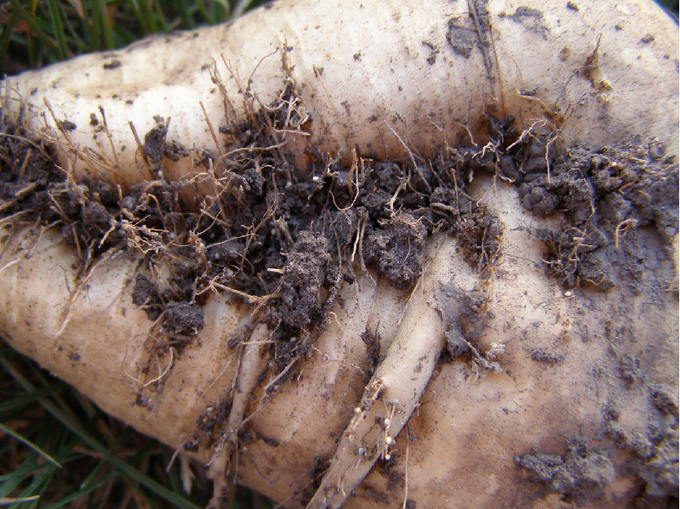
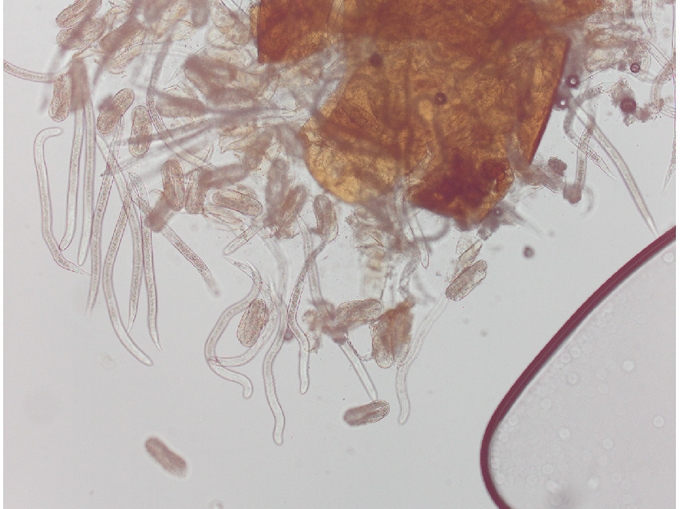
Biology
Beet cyst nematodes are classified among the nematodes (Nematoda) in the family Heteroderidae.
Beet cyst nematodes live in the soil and can survive for years in their permanent form, the brown cysts filled with eggs or larvae, even without host plants. Therefore, they may well be detected in fields where sugar beet has not been grown for many years. Mature cysts are filled with up to 500 eggs and larvae, which remain dormant until external influences (mainly climatic) activate them to hatch from the cysts. The second larval stage larvae migrate to young, growing roots, penetrate plant tissue, using the powerful mouth spine, and develop into males and females in the root through the third and fourth larval stages. While the males are worm-shaped and mobile, the females are lemon-shaped and attached to the roots, where they continue their sucking activity. After fertilization and maturation of the eggs, the females die and remain viable as a cyst in the soil for years. Under suitable conditions (weather and temperature), beet cyst nematodes develop several generations per year. To complete a generation, beet cyst nematodes require a heat sum of 465°C. This results from the sum of the daily average soil temperatures at a soil depth of ten to 20 cm and the values above the base temperature of 8 °C.
Damage symptoms
Affected plants wilt, decline and show growth retardation. This type of damage usually occurs in nests in the stand (around June in warm weather). Infested plants wilt more than non-infested plants during dry periods in the sunshine; they recover during the night. The beet body remains small and branches out, forms more lateral roots and a so-called root beard is formed (beardiness of the beet). Due to the increased lateral root formation, there is an increase in the soil attachment to the beet.
Lemon shaped cysts are found on the lateral roots.
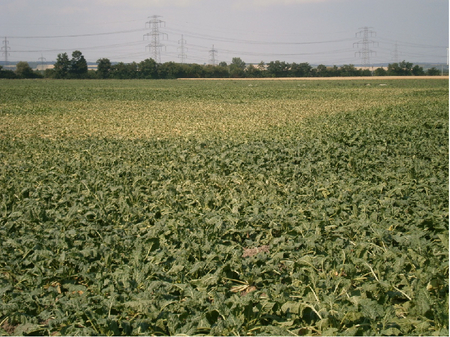
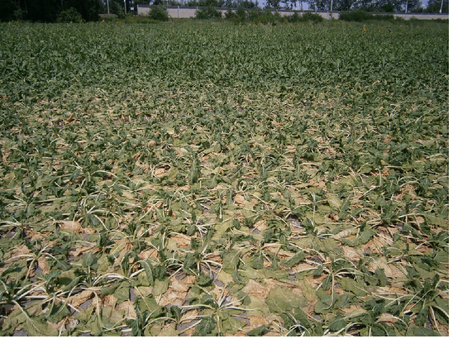
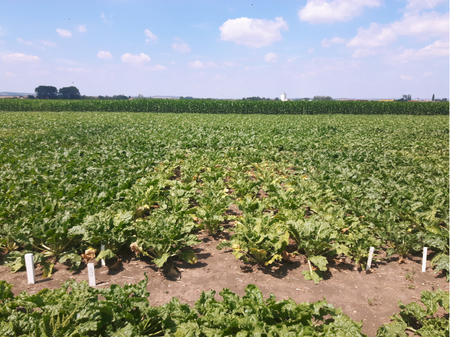
Host plants
The host plants of beet cyst nematodes are mainly cruciferous plants (Brassicaceae) and goosefoot plants (Chenopodiaceae) such as. Sugar beet, fodder beet, rapeseed, turnip, all types of cabbage, kohlrabi, radish, radish, spinach, chard, oil radish, mustard, as well as numerous weeds such as species of melilot, goosefoot species, field mustard, shepherd's purse, chickweed, etc.
Propagation and transmission
Larvae of beet cyst nematodes have low active dispersal (migration) in the soil. Spread from one infested area to another area occurs passively through the carryover of larvae and cysts by soil that may adhere to harvesting equipment, tillage equipment, tractor tires, or transport vehicles. Consideration should be given to the spread of cysts by wind and water erosion and by shared harvesting equipment.
Prevention and control
- Timely detection of infestation by soil testing for beet cyst nematodes prior to planned cultivation.
- Pay attention to farm hygiene: In the event of nematode infestation on the farm, cleaning of cultivation equipment, footwear and vehicles is of great importance to prevent the cysts from spreading with soil to other areas. Waste soil from grading should never be spread on cropland or on the manure pile (risk of nematode spread with manure application).
- Four-year crop rotation is essential. Cultivation of intercrops such as corn, rye, alfalfa, chicory, flax, and onion induces nematode larvae to hatch but prevents their further development. Neutral crops, such as cereals, potato, poppy, pea, clover, sunflower and hemp, are also recommended in crop rotation
- Cultivation of nematode-resistant catch crops, e.g., resistant oil radish or mustard varieties nematode-resistant sugar beet varieties to reduce and mitigate a nematode population.
- Cultivation of a tolerant sugarbeet variety to safeguard yields when infestation with beet cyst nematodes has been detected on an area. Cultivation of tolerant sugarbeet varieties reduces the risk of yield loss; however, tolerant sugarbeet varieties may contribute to an increase in beet cyst nematodes.
Specialized information
Detection of beet cyst nematodes on an area can be determined by soil testing according to a sampling plan.
Last updated: 03.10.2025
automatically translated